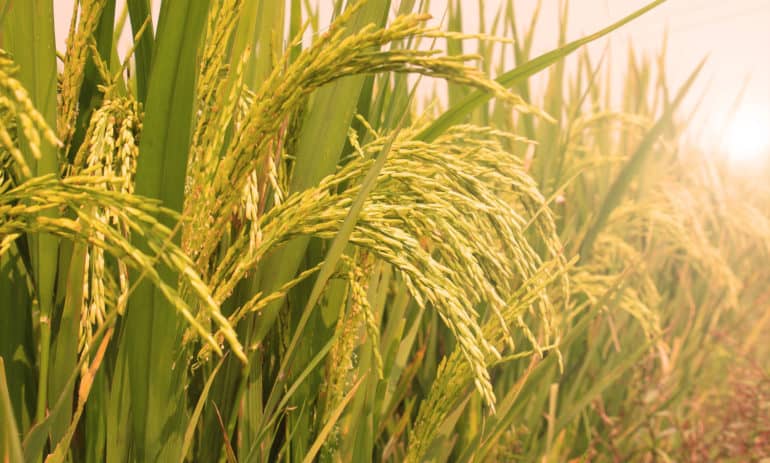Agricultural activities employ two-thirds of India’s population. It’s a primary activity that provides food grains and industrial raw materials. Because India is such a large nation, it has a diverse range of food and non-food crops that are grown throughout the three primary agricultural seasons of zaid, kharif, and rabi.

The following are some of the most common crops:
- Rice, wheat, millets, maize, and pulses are some of the most important food crops.
- Sugarcane, oilseeds, horticulture crops (tea, coffee, rubber, cotton, and jute), and cash crops (sugarcane, oilseeds, horticulture crops, tea, coffee, rubber, cotton, and jute) are all examples of cash crops.
Seasons of Cropping
| S.No. | Seasons of Cropping | Duration | Crops | States |
|
|
Zaid | March-July are the months for sowing and harvesting (between Rabi and Kharif) | Fruits, vegetables, and fodder crops are all available in season. | The majority of the states in the north and northwest |
|
|
Kharif | June-July are the months when the seeds are sown.
Harvested between September and October |
Rice, maize, jowar, bajra, tur, moong, urad, cotton, jute, groundnut, and soybean are some of the crops grown in India. | Assam, West Bengal, Odisha’s coastal districts, Andhra Pradesh, Telangana, Tamil Nadu, Kerala, and Maharashtra are all coastal states. |
|
|
Rabi | October-December are the months when the seeds are sown.
April-June are the months when the crops are harvested. |
Wheat, barley, peas, gramme, mustard, and other grains | Punjab, Haryana, Himachal Pradesh, Jammu and Kashmir, Uttarakhand, and Uttar Pradesh are the states of Punjab, Haryana, Himachal Pradesh, Jammu and Kashmir, Uttarakhand, and Uttar Pradesh. |
The Most Important Food Crops
Rice
- Temperatures range from 22 to 32 degrees Celsius, with considerable humidity.
- Rainfall ranges between 150 to 300 cm.
- Soil type: Loamy, deep clayey soil.
- West Bengal > Punjab > Uttar Pradesh > Andhra Pradesh > Bihar are the top rice-producing states.
- It is the bulk of Indians’ principal food crop.
- After China, India is the world’s second-largest rice producer.
- Paddy is cultivated three times a year in states like Assam, West Bengal, and Odisha. Aus, Aman, and Boro are their names.
- A few government programmes to boost rice growing include the National Food Security Mission, Hybrid Rice Seed Production, and Rashtriya Krishi Vikas Yojana.
Wheat
- Temperatures should range from 10-15°C (sowing time) to 21-26°C (ripening and harvesting period) in strong sunshine.
- 75-100 cm of rain is expected.
- Well-drained fertile loamy and clayey loamy soils (Ganga-Satluj plains and black soil region of the Deccan)
- Uttar Pradesh > Punjab > Madhya Pradesh > Haryana > Rajasthan are the top wheat-producing states.
- After China, India is the world’s second-largest producer.
- This is the second most significant cereal crop and the principal food crop in north and north-western India.
- The success of the Green Revolution aided the growth of Rabi crops, particularly wheat.
- A few government programmes to boost wheat-growing include the Macro Management Mode of Agriculture, the National Food Security Mission, and the Rashtriya Krishi Vikas Yojana.
Millets
- Temperatures range from 27 to 32 degrees Celsius.
- Rainfall ranges between 50 to 100 cm.
- Because they are less susceptible to soil shortages, they may be cultivated on poor alluvial or loamy soil.
- Jowar is a rain-fed crop that is cultivated in wet locations with little or no irrigation.
- Sandy soils and shallow black soils characterise Bajra.
- Ragi grows on soils that are red, black, sandy, loamy, and shallow black.
- Rajasthan > Karnataka > Maharashtra > Madhya Pradesh > Uttar Pradesh are the states that produce the most millets.
- Maharashtra > Karnataka > Madhya Pradesh > Tamil Nadu > Andhra Pradesh Jowar: Maharashtra > Karnataka > Madhya Pradesh > Tamil Nadu > Andhra Pradesh
- Rajasthan > Uttar Pradesh > Gujarat > Madhya Pradesh > Haryana. Bajra: Rajasthan > Uttar Pradesh > Gujarat > Madhya Pradesh > Haryana.
- These are also known as coarse grains, and they are abundant in nutrients. Ragi has a lot of iron, calcium, and other micronutrients, as well as a lot of roughage.
- In terms of acreage and output, jowar is the third most significant food crop.
- The government’s attempts to encourage millet production include the National Agricultural Insurance Scheme and the Program for Nutrition Assurance via Comprehensive Millets Advancement.
Maize
- Temperatures range from 21 to 27 degrees Celsius.
- Rainfall: A lot of rain.
- Old alluvial soil is the soil type.
- Karnataka > Maharashtra > Madhya Pradesh > Tamil Nadu > Telangana are the top maize producing states.
- India is the world’s sixth-largest producer.
- It may be utilised as both diet and manure.
- Maize output has increased due to the use of contemporary inputs such as High-Yielding Variety seeds, fertilisers, and irrigation.
- One of the government’s maize efforts is the Maize Technology Mission.
Pulses
- Temperatures range from 20 to 27 degrees Celsius.
- Rainfall is expected to be between 25 and 60 cm.
- Sandy-loamy soil is the soil type.
- Madhya Pradesh > Rajasthan > Maharashtra > Uttar Pradesh > Karnataka are the states that produce the most pulses.
- India is both the world’s greatest producer and consumer of pulses.
- In a vegetarian diet, these are the main sources of protein.
- Tur (arhar), urad, moong, masur, peas, and gramme are the most common pulses farmed in India.
- With the exception of arhar, all of these crops are leguminous crops that help restore soil fertility by fixing nitrogen from the air. As a result, they’re usually produced in a round with other crops.
- The government’s plans to encourage pulse production include the National Food Security Mission for Pulses, the Pulses Development Scheme, and the Technological Mission on Pulses.

